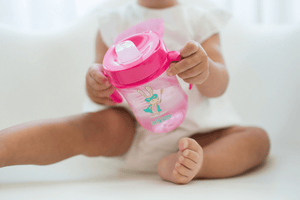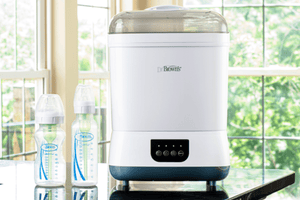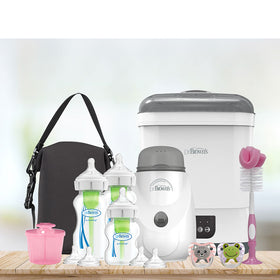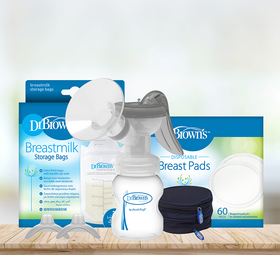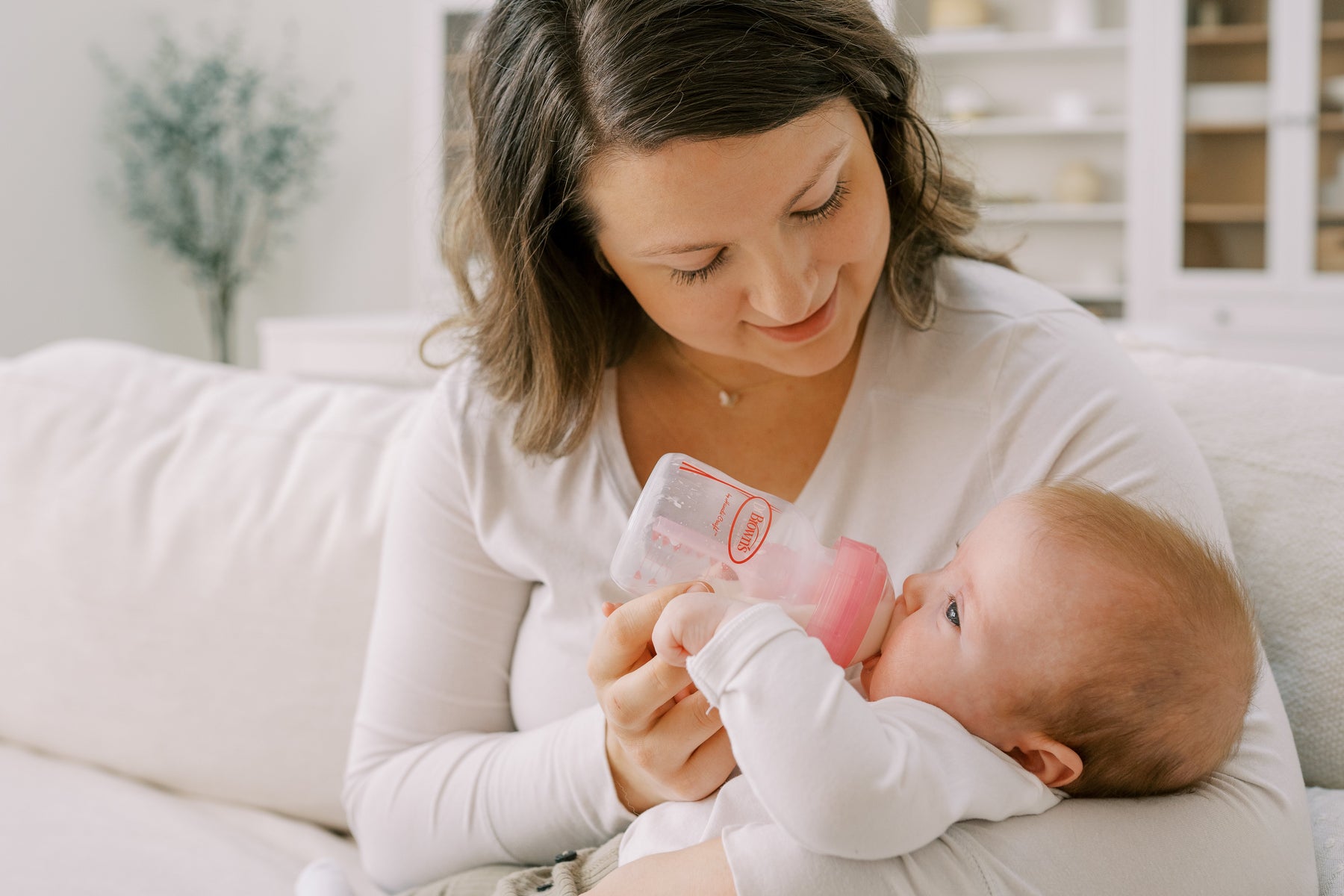
When to Switch Bottle Types To Support Feeding Changes As Baby Grows
When Feeding Starts to Feel Different
Just like babies outgrow clothes, they also outgrow their bottle flow, shape, and size. If feeding your baby is taking longer, milk dribbling out, or they keep pushing the bottle away in frustration, even though your baby used to drink peacefully, finishing every bottle with ease.
Then it might be time to switch bottle styles or nipple levels.
In this Dr Brown’s Australia guide, you’ll learn when to make the switch and how the right bottle can bring calm back to feeding time.
Why Bottle Needs Change as Babies Grow
In the first year, your baby’s sucking strength, coordination, and appetite evolve quickly. Each phase demands a different flow rate and bottle design to support healthy feeding and avoid chaos.
-
0–3 months → gentle, slow feeds
-
3–6 months → stronger suction, larger feeds
-
Above 6 months → thicker milk or solids, self-feeding attempt
Even though there are generally acceptable bottle types for each growth stage, it’s still best to follow your baby’s cues. Because every baby is unique, they don’t all follow conventional patterns.
Signs It’s Time to Switch Bottles or Nipples
-
Feeding takes too long, or the baby gets frustrated
-
Leaking, gulping, or biting the nipple
-
Extra gas or spit-up after feeding
-
Starting solids or a thicker formula
-
Baby flattens or chews the nipple
Finding the Right Bottle Style for Each Stage
-
0–3 Months — Gentle Beginnings
Slow-flow, narrow-neck bottles reduce air intake and mimic breastfeeding pace.
Best fit: Dr Brown’s Options+ Narrow Neck | Level 1 Nipple.
-
3–6 Months — Growing Appetite
Move to Level 2 nipples or wide-neck bottles for smoother, faster flow. Ideal for combination feeding and easy cleaning.
-
6–9 Months — Thicker Feeds
Try Level 3 or Y-Cut nipples for thicker formula or purées. Wide necks help babies grip and learn independence.
-
9 Months + — Transition to Cups
Introduce Soft-Spout or Straw Cups for self-feeding. Dr Brown’s transition range protects gums and encourages confident sipping.
Other Feeding Challenges That May Require Switching
Switching bottles isn’t only required due to growth. As sometimes your baby might be responding to certain challenges. And when these happen, you’d also need to anticipate the problem and respond in kind. Some feeding issues that might signal a change, even before milestones, and their possible solutions include:
-
Colic or reflux → anti-colic vented bottles
-
Nipple confusion → wide-neck, breast-like teat
-
Teething → replace soft silicone nipples often
-
Overfeeding or choking → slower flow
Expert Tips for a Smooth Feeding Transition
-
Change one element at a time (start with nipple flow).
-
Introduce new bottles during calm, happy feeds.
-
Warm the nipple slightly for familiarity.
-
Let another caregiver offer the bottle if the baby resists.
-
Stay patient, adjustment can take a few days.
When to Seek Expert Guidance
We understand that not every problem can be anticipated or solved at home. So if feeding regularly exceeds 30 minutes, or the baby refuses multiple bottles, speak with:
-
Your doctor or Child & Family Health Nurse
-
A lactation consultant (Find an LCANZ-certified consultant in Australia)
They can assess for reflux, tongue tie, or sensitivity issues.
Quick Reference Chart - Bottle Styles by Stage
|
Age |
Bottle Type |
Nipple |
Feeding Style |
|
0–3 mo |
Narrow Neck |
Level 1 |
Slow flow / reduced air |
|
3–6 mo |
Wide Neck |
Level 2 |
Moderate flow |
|
6–9 mo |
Wide Neck / Y-Cut |
Level 3 / Y |
Thicker feeds |
|
9 mo + |
Transition Cup |
Spout / Straw |
Self-feeding |
Conclusion — Growing Together, One Bottle at a Time
Every feeding stage brings change, but with the right tools and timing, it also brings confidence.
Dr Brown’s Australia supports you at every step — from newborn bottles to toddler transition cups — so each sip is calmer, safer, and happier.
Explore our full range of feeding accessories → Dr Brown’s Anti-Colic Bottles & Cups




